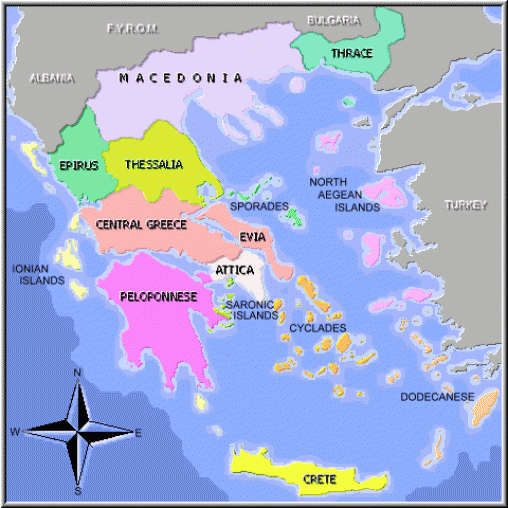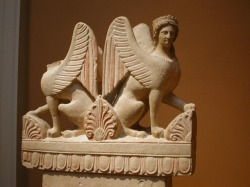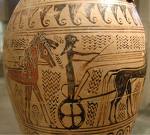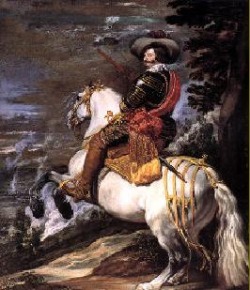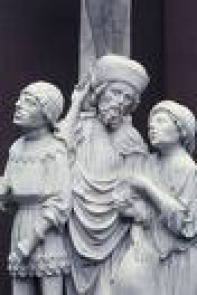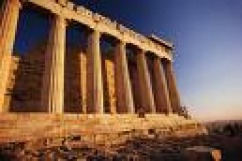Greece
Flag of Greece
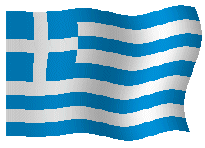
Interesting Facts:
Athens is the capital of Greece
Greek is one of the oldest languages of Europe
125 inhabited islands (3000 islands altogether)
Pindus Mountains – Greece’s largest mountain range
Crete – largest of the Greek islands
Piraeus – Greece’s largest port
The popular yo-yo toy, the second oldest known toy in the world, originated in the days of ancient Greece, around 3,000 years ago
The Greeks were the first to have a democratic government
The first Olympic games were held in Greece almost 3000 years ago
The Greeks were the first to develop an alphabet with vowels
55% of the youth in Greece graduate from a 4yr college - Highest rate in the world
Greece has the lowest crime rate in Europe, and second in the world
Greece is the only country in the world that is officially Orthodox (Christian)
Greece is the only country in Europe where state and religion is united
Greece has the largest maritime fleet in the world
Apostle John wrote the book of Revelation in the Greek island of Patmos
Greece is a small country with a total population of about 10 million people
Map of Greece
The President of Greece
the Hellenic Republic
Dr. Karolos Papoilias

He is the elected Head of State
He was sworn in as President of Greece on 12 March 2005
He was 75 years old when he took office
He won by an unprecedented 279 votes in the country's 300-seat parliament
Government –
The government of Greece is a parliamentary democracy
The people elect 300 parliamentary deputies who from the parliament which conducts the legislative duties of the government
The political party which can collect 151 seats or more in the parliament assumes the duties of the administration
The president is not elected by the people, he is elected by the parliament
The party president automatically becomes Prime Minister and he then appoints people to become cabinet ministers
Greece is considered a dictatorship government because Papoilias and his political party has absolute majority of the parliament deputies (members of parliament) are NOT allowed to vote against ANYTHING their party supports
Currency of Greece

Greece's monetary unit is the Euro
No other currency is accepted
The euro comes in seven denominations: 5, 10, 20,50, 100, 200 and 500
The pictures on the Euros illustrate the evolution of architectural styles in the history of Europe
Before the year 2002 Greece used the demise for it's currency
In the year 2002 the euro became the only accepted currency to be used in Greece
Today the old drachmas are worthless and can not be used or exchanged for the euro
The euro coins
The euro coin comes in eight denominations: 1, 2, 5, 10, 20, 50 cent and 1 and 2 euro
One face(or side of a coin) is common to all the countries and represents cohesion between the Member States of the European Union
The other face shows national symbols chosen by the different countries
All euro coins, whatever the national face, are accepted in all euro area countries
Religions in Greece
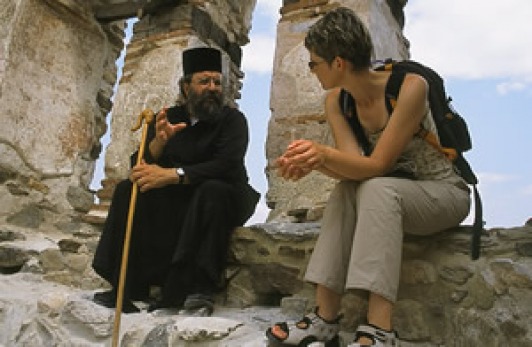
The Greek population is composed of a 97% of Christian
Orthodox Greek Muslims make up about 1.3% of the population
The rest of the population is Roman Catholic and Jewish
Some groups in Greece have started an attempt to reconstruct Hellênismos, the old Greek pagan religion
Greece (and the Greek Islands) and Russia are the only countries to have such a great proportion of people that belong to the Orthodox Church
The Orthodox Church forms the third largest branch of Christianity after the Roman Catholics and the Protestant
Industries In Greece

Industries
*Food products such as:
olive oil, honey, mastic, ouzo, tsipouro, cheeses and wine
*Metals and metal products
*Textiles
*Electronics such as:
radios, televisions, and communications equipment
*Petroleum refining
*Machinery and transport equipment
*Tourism
Resources of Greece include:
bauxite, nickel, iron pyrites, magnetite, asbestos, marble, salt, chromite, lignite
Exports
machinery, fruit and vegetables, chemicals, clothing, mineral fuels and lubricants, textiles, iron and steel, aluminium and aluminium alloys
Imports
petroleum and petroleum products, machinery and transport equipment, food and live animals, chemicals and chemical products
Agricultural Products
of Greece

A Greek farmer bundles straw
Greek agriculture employs 528,000 farmers, 12% of the total labor force
Greece only produces 3.6% of the national gross domestic product (GDP) or gross domestic income (about $16 billion annually)
A large number of the country's immigrants are employed in the agricultural sector of the economy
Products grown in Greece Include:
sugar
beets
tomatoes
wheat corn
oranges
peaches
nectarines
olive
cotton
barley
apples
karpoozi (watermelon)
peponi (honey-dew melon)
tobacco
livestock( goats, sheep, chickens, and pigs)
dairy products
Agricultural products that make up one-third of total exports includes:
processed foods
beverages
tobacco
Famous Landmarks in Greece
The Acropolis of Athens
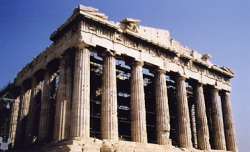
The Acropolis of Athens can be seen as a symbol for the Ancient Greek World, the classical period of the Hellenic civilization
It was built around 2,500 years ago
The Acropolis has several temples,one being the Parthenon
The Parthenon was dedicated to Athena, a Greek goddess
The Parthenon is actually the largest Doric temple ever completed in Greece
The Acropolis is now in ruins
Theatre of Dionysos

The Theatre of Dionysos is located in the center of the city of Athens
The Theatre of Dionysos was originally a timber structure that was constructed after the Festival of Dionysia of Athens
It was built sometime around 600 BC
The festival took place during May and consisted of much fighting, dancing, singing and Greek feasting.
Greek Art
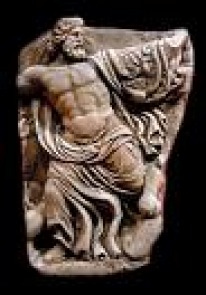
Zeus - Greek god - Greek Sculpture
Ancient Greek art is mainly in four forms:
Architecture
includes houses, religious buildings like temples and tombs, and public building like city walls, theaters, stadia, and stoas
Sculptures
includes small figurines and life-size statues, but also relief sculptures which were on the sides of buildings, and also tombstones
Wall paintings
Includes murals and wallpaper and paintings
Painted pottery
Stone Age Greek Pottery
called the Neolithic period was around 6000 B.C.
The first pottery was plain, but very soon people began to decorate it.
The earliest kind of decorated pottery in Greece is called Rainbow Ware, though it is really only black and red.
Early Bronze Age Greek Pottery
made Minyan Ware around 2100 B.C
It was made on a potter's wheel
Late Bronze Age Greek Pottery
called the Mycenean period, around 1500 B.C.
The Greeks began to make pottery with designs on it
The background was usually cream-colored and the designs were painted on in black and red
Geometric patterns, men fighting, people driving a chariot, or imaginary wild animals were used for designs
Dark Age Greek Pottery
Called the Mycenean style pottery was made around 1200 B.C
It was sloppy and tended to be lopsided
Geometric Greek Pottery
In the Archaic Period, around 900 B.C. pottery was created with lots and lots of lines and patterns crowding over every inch of the pots
Black-Figure Greek Pottery
In Athens, during the Archaic period, the Athenian potters began to paint their pottery with people in silhouette
This style of pottery is called black-figure, because the people are all black
Red-Figure Greek Pottery
Around 530 B.C. the Athenian potters developed a technique where the background was black and they left the people red
This technique makes the people look much more real
Greek Sculpture
Painted Pottery
Painting neoclassicism Greek Art
www.buy-original-art.com/.../classical.jpg
Greek Art & Architecture
Music in Greece

Greece has a long tradition of music, going back to ancient years
Many gods and goddesses were connected with music and dance
The word music comes from the Nine Muses of ancient Greece
The Nine Muses are considered the inspiration for all artists
Types of Music
Heptanesian cantatha - usually sung by three male voices and accompanied by guitar, mandolin or other similar instruments
Rebetiko songs - are song by a single voice and is often gloomy and fatalistic in content
Rembetika music - is the music of the Greek Underground
Kantadhes songs - are performed by three male singers accompanied by a mandolin or guitar
Nisiótika songs - Athenian songs – serenades
Italian Opera
Éntekhno is orchestral music with elements of Greek folk rhythm and melody
Laiko was the pop music of the 5o’s and 60’s
Tsifteteli - is the Greek belly dance music
Elafro- is the easy-listening, western-style music
Click on the arrow and listen to a
Greek Folk Song
Favorite Foods
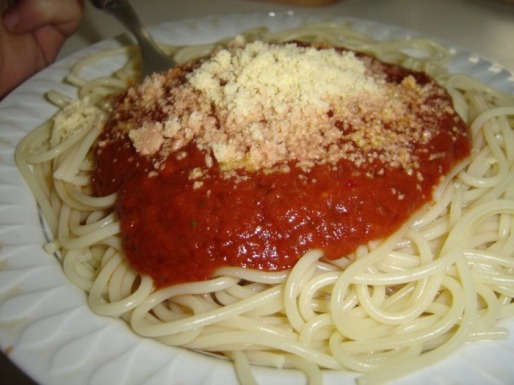
Veal
Pork
Lamb
Goat
Fish
Greek salad –
Tsatziki - Cucumber yogurt dip
Feta - A white goat cheese
Souvlaki - Skewered meat on a spit
Vegetables – (especially tomatoes)
Fruits-(especially watermelon and honey dew melons)
Pita gyro - open pie filled with small pieces of
Moussaka – eggplant and minced meat
Dolma - staffed vineleaves
Baklava - Layers of fila pastry, chopped nuts, and a honey-flavored syrup
And
Spaghetti
